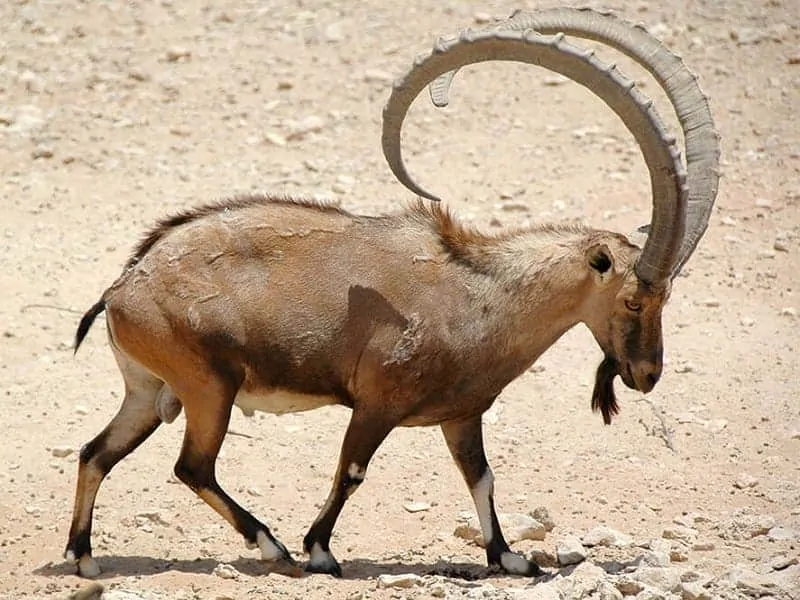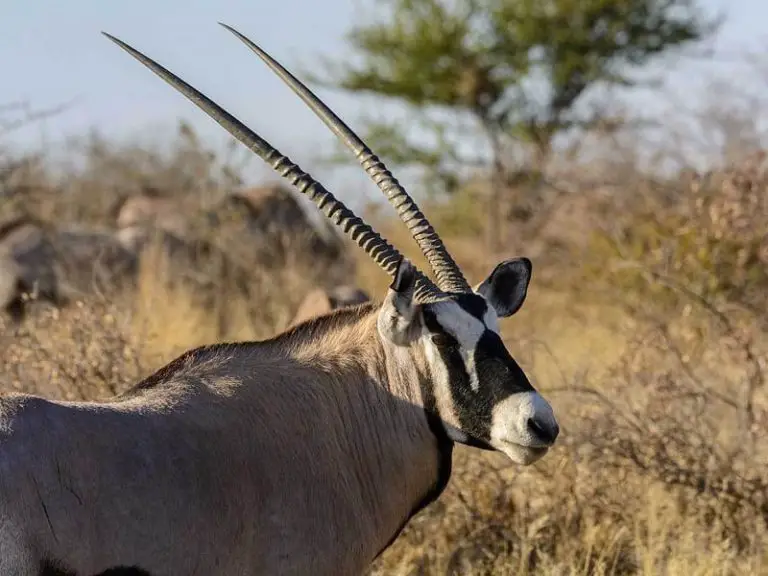
List African Animals With Horns African Gazelles And Antelope Klipspringer Topi Ugandan Kob
The Horn of Africa is a large peninsula in East Africa. Located on the easternmost part of the African mainland, it is the fourth largest peninsula in the world. It is composed of Ethiopia, Eritrea, Somalia, and Djibouti; broader definitions also include parts or all of Kenya, Sudan, South Sudan, and Uganda. It lies along the southern boundary of the Red Sea and extends hundreds of kilometres.

8 of The Biggest African Animals with Horns 10Largest
16/08/2023 128 0 Animals with horns in Africa are a fascinating sight, but they face a dire fate due to hunting. Many of these majestic creatures are hunted for their horns, leading to a decline in their populations. It is unfortunate that some species are even on the brink of extinction, purely because of their horns.

40 Beautiful Pictures of African Animals with Horns
Antlers Antlers grow on the Cervidae family of animals, such as moose, elk and deer. Antlers are usually covered in a velvety growth as opposed to the hard keratin of horns. Over time the velvet texture disappears and the antlers become smooth and shiny. Horns Horns, on the other hand, belong to the Bovidae family.

8 of The Biggest African Animals with Horns 10Largest
Kudu The greater kudu definitely boasts one of the grandest pairs of horns. On average, they are an impressive 48 inches in length (122 cm) and average two and a half twists in the length of the horn. Kudus are tall, large antelopes and are always very exciting to spot. Straight Horns

21 African Horned Deer Species Types of Antelope Rhino Rest
1. Gemsbok ( Oryx gazella) The gemsbok is an African animal with horns, with its horns measuring around 33 inches long. ©Ondrej Prosicky/Shutterstock.com First on our list of African animals with horns is the gemsbok, which holds the title of being the largest species within the Oryx genus.

horn kudu African animals, African animals photography, South african animals
1. Nyala Nyala, (Tragelaphus angasii) is slender antelope of southeastern Africa, one of the African animals with horns, and a member of the spiral-horned antelope tribe Tragelaphini (household Bovidae), which additionally contains the kudu and eland.

40 Beautiful Pictures of Animals with Horns Animals with horns, Unusual animals, Interesting
The Crossword Solver found 30 answers to "Horned animal on the Horn of Africa", 5 letters crossword clue. The Crossword Solver finds answers to classic crosswords and cryptic crossword puzzles. Enter the length or pattern for better results. Click the answer to find similar crossword clues . Enter a Crossword Clue Sort by Length

The male Greater Kudu, an African antelope with impressive spiral horns (Photo dreamstime
Birds of the Horn of Africa (2 C, 94 P) A. African wild ass (1 C, 6 P) D. Fauna of Djibouti (2 C, 12 P) E. Fauna of Eritrea (3 C, 1 P) Fauna of Ethiopia (5 C, 34 P) Fauna of the Ethiopian Highlands (31 P) S. Fauna of Somalia (4 C, 30 P) Fauna of Somaliland (1 C)

Meet the Gemsbok a Stunning, StraightHorned African Antelope
The African buffalo is one of the creatures with horns easily recognizable throughout Africa. These animals, which you can find in any environment with access to both water and grass, have massive horns and a stocky build. You can also notice that they form two types of herds.

40 Beautiful Pictures of African Animals with Horns
Two species are recognized, but only one occurs in the popular safari destinations of eastern and southern Africa (the other is confined to West Africa). Weighing up to 2,000lb, this gregarious antelope has a heavy build, a prominent dewlap, relatively short but heavily-spiraled horns, and indistinct white stripes on its tan-grey coat.

About Wild Animals KuduAn animal with massive curly horns Africa animals, Zoo animals
Horn of Africa, region of eastern Africa.It is the easternmost extension of African land and for the purposes of this article is defined as the region that is home to the countries of Djibouti, Eritrea, Ethiopia, and Somalia, whose cultures have been linked throughout their long history. Other definitions of the Horn of Africa are more restrictive and exclude some or all of the countries of.

Male_impala_profile.jpg (1550×2519) Animals with horns, African animals, Horns
Spiral-horned antelope bulls tend to be heavier and darker than the cows. In eland, the bulls' horns are always heavier and longer than the cows' and often have more spirals. The spirals help the bulls lock horns with each other when engaged in fights over cows. As its name suggests, the giant eland is the world's largest antelope.

22 Unique African Animals with Beautiful Horns Rhino Rest
2:42. Bighorn males, called rams, are famous for their large, curled horns. These impressive growths are a symbol of status and a weapon used in epic battles. That's not the case for the Cape.

List African Animals With Horns 40 Beautiful Pictures of African Animals with Horns These
Like other horned animals, oryx display exceptional proprioception when it comes to the tips of their horns. Even lions exhibit trepidation when tackling the scything weapons of a desperate gemsbok. The Oryx genus is part of the larger Hippotraginae subfamily, also known as the grazing antelope.

African Animals Pictures With Names
One of the most well-known horned animals in Africa is the rhinoceros. There are two main species of rhino found on the continent - the black rhino and the white rhino.. The rhino, with its massive horn, and the antelopes, such as the kudu and sable, with their unique horn structures, are just a few examples of the incredible diversity.

Rhinos photo by Nigel Pravitt African animals, Wildlife animals, Animal pictures
15-18 years. Length. 30-60. cm inch. The Saharan horned viper ( Cerastes cerastes) is a venomous species of viper native to northern Africa and parts of the Arabian Peninsula and Levant. It often is easily recognized by the presence of a pair of supraocular "horns", although hornless individuals do occur. No.